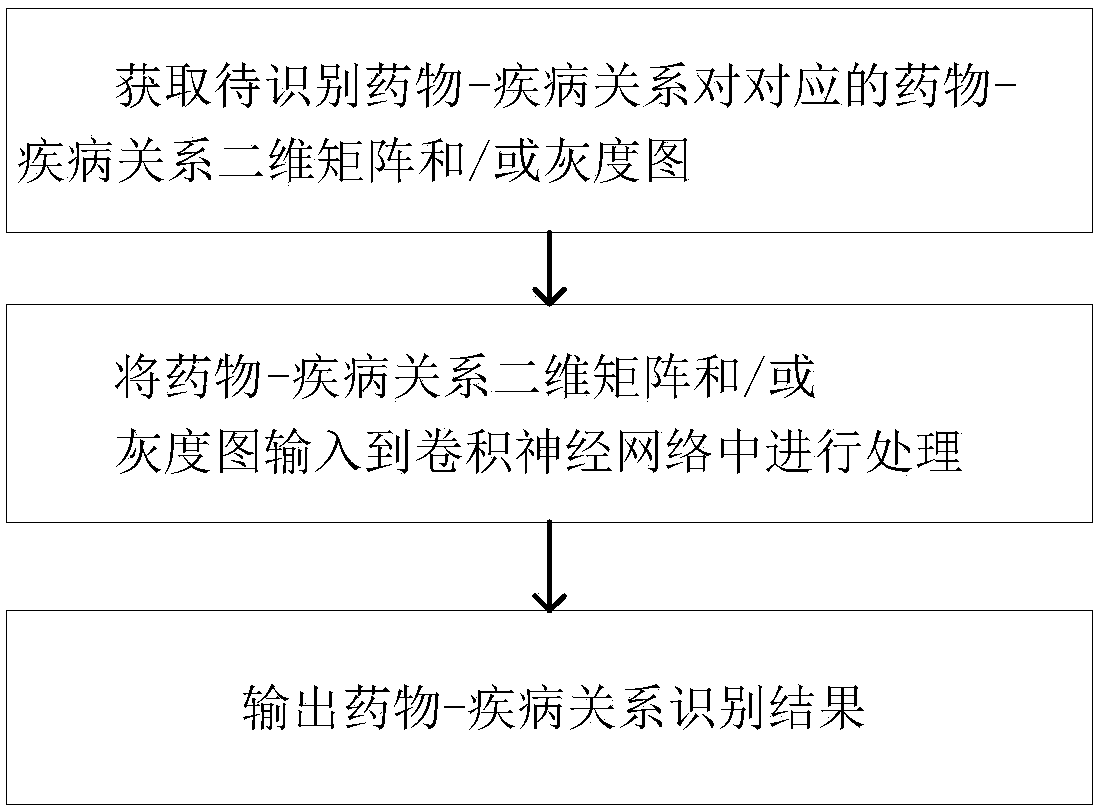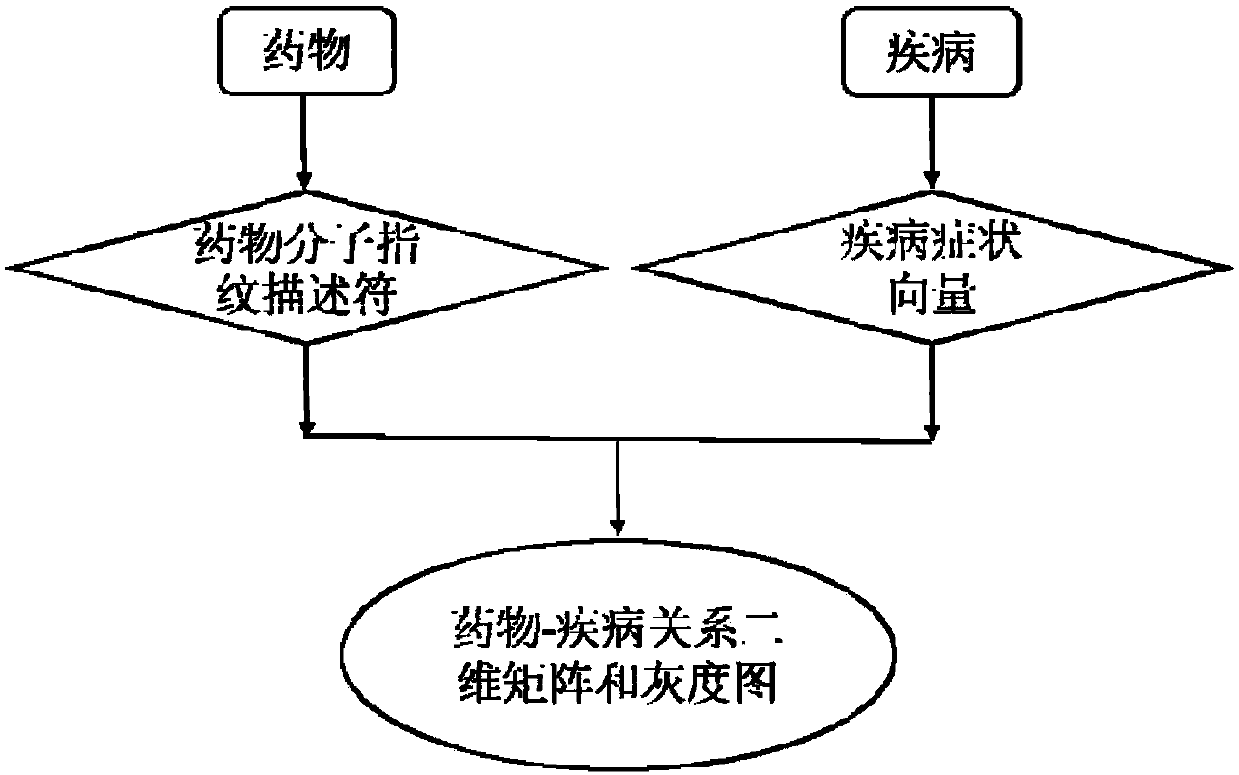Drug-disease relation identification method, system and device
A technology for relation recognition, disease, applied in medicine or prescription, neural learning methods, character and pattern recognition, etc.
- Summary
- Abstract
- Description
- Claims
- Application Information
AI Technical Summary
Problems solved by technology
Method used
Image
Examples
Embodiment 1
[0077] A drug-disease relationship recognition method disclosed in the present invention, such as figure 1 shown, including the following steps:
[0078] Obtain the drug-disease relationship two-dimensional matrix and / or grayscale image corresponding to the drug-disease relationship pair to be identified;
[0079] The obtained drug-disease relationship two-dimensional matrix and / or grayscale image are input into the convolutional neural network for processing, so as to output the drug-disease relationship recognition result.
[0080] The convolutional neural network can process the image or the matrix corresponding to the image to output the processing result. In the method of the present invention, in order to identify whether a certain drug D can treat the disease d, the drug D and the disease d are regarded as or matched into a drug-disease relationship pair D-d, and the two-dimensional drug-disease relationship of the drug-disease relationship pair D-d is obtained Matrix...
Embodiment 2
[0082] The present invention will be further described below in conjunction with the preferred content of this embodiment. The drug-disease relationship identification method in this embodiment can be realized by the drug-disease relationship identification system in Example 3 and the drug-disease relationship identification device in Example 4.
[0083] A drug-disease relationship identification method, comprising the following steps:
[0084] Obtain the drug-disease relationship two-dimensional matrix and / or grayscale image corresponding to the drug-disease relationship pair to be identified;
[0085] The obtained drug-disease relationship two-dimensional matrix and / or grayscale image are input into the convolutional neural network for processing, so as to output the drug-disease relationship recognition result.
[0086] The convolutional neural network can process the image or the matrix corresponding to the image to output the processing result.
[0087] Further as a pre...
Embodiment 3
[0120] In this embodiment, the method described in Embodiment 2 will be applied to test the performance of the convolutional neural network model and the experimental results will be given.
[0121] Further as a preferred embodiment, the specific parameters of the convolutional neural network model used when applying the method described in Example 2 are as follows: it includes 1 input layer, 3 convolutional layers (each layer contains 32, 64 and 128 convolution kernels of size 5×5, each convolution layer is followed by a modified linear unit activation function and a downsampling layer of size 2×2), 4 fully connected layers (each layer contains 500 neurons, each layer is connected to a dropout layer, and 50% of the neurons do not update the connection weight each time during the training process), 1 fully connected layer (only contains two neurons), 1 softmax layer and A deep convolutional neural network model with 1 classification layer. The stochastic gradient descent algo...
PUM
 Login to View More
Login to View More Abstract
Description
Claims
Application Information
 Login to View More
Login to View More - R&D
- Intellectual Property
- Life Sciences
- Materials
- Tech Scout
- Unparalleled Data Quality
- Higher Quality Content
- 60% Fewer Hallucinations
Browse by: Latest US Patents, China's latest patents, Technical Efficacy Thesaurus, Application Domain, Technology Topic, Popular Technical Reports.
© 2025 PatSnap. All rights reserved.Legal|Privacy policy|Modern Slavery Act Transparency Statement|Sitemap|About US| Contact US: help@patsnap.com



